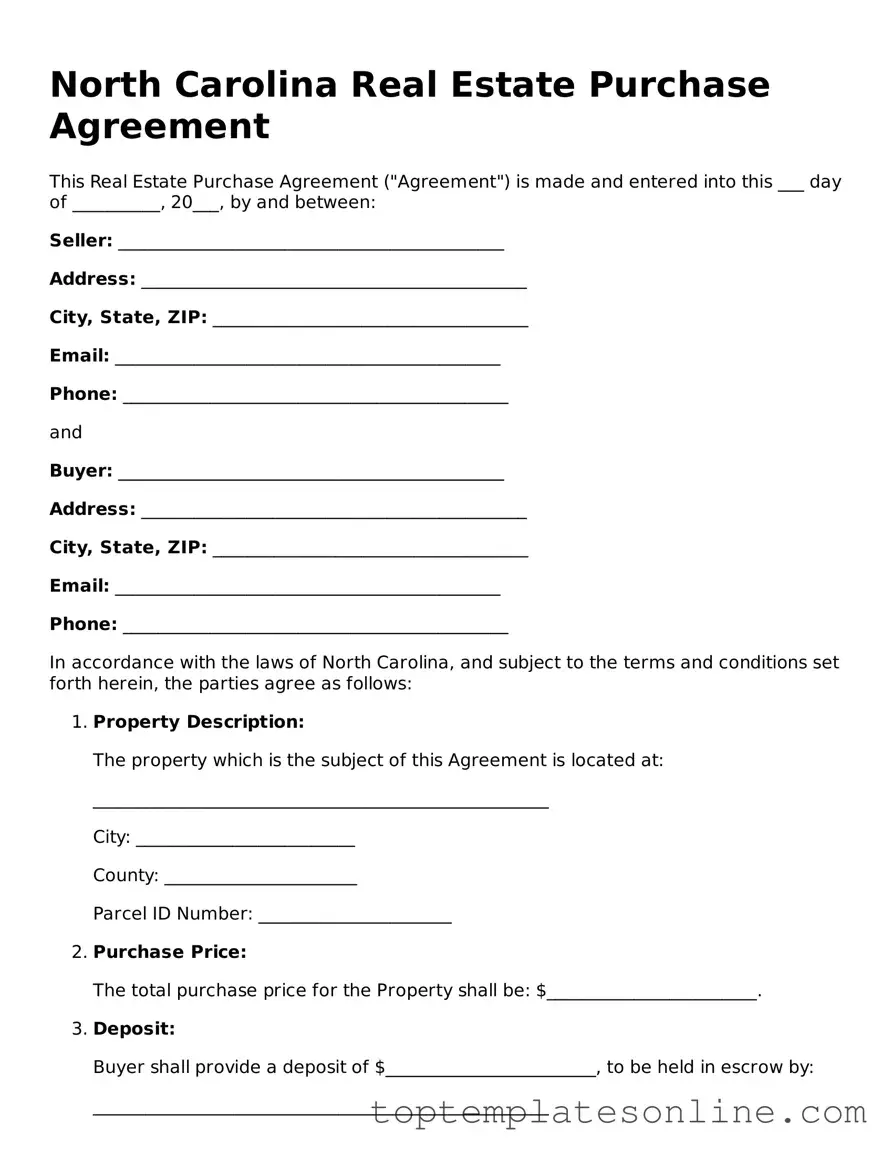Blank Real Estate Purchase Agreement Template for North Carolina State
The North Carolina Real Estate Purchase Agreement is a legally binding document that outlines the terms and conditions of a real estate transaction between a buyer and a seller. This form serves as a crucial tool for ensuring that both parties understand their rights and obligations throughout the buying process. Familiarity with this agreement can help streamline negotiations and facilitate a smoother closing.
Customize Real Estate Purchase Agreement Here
